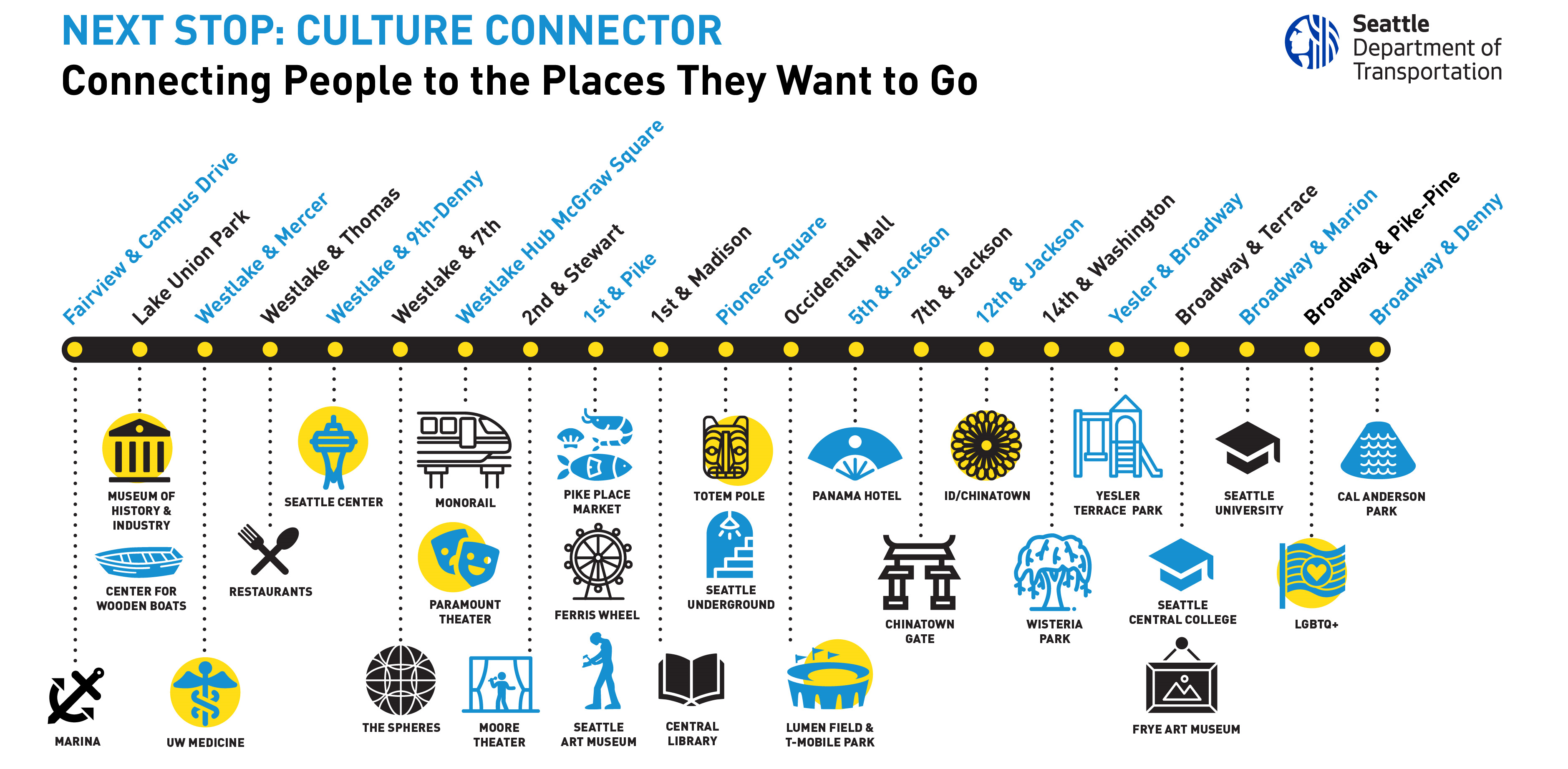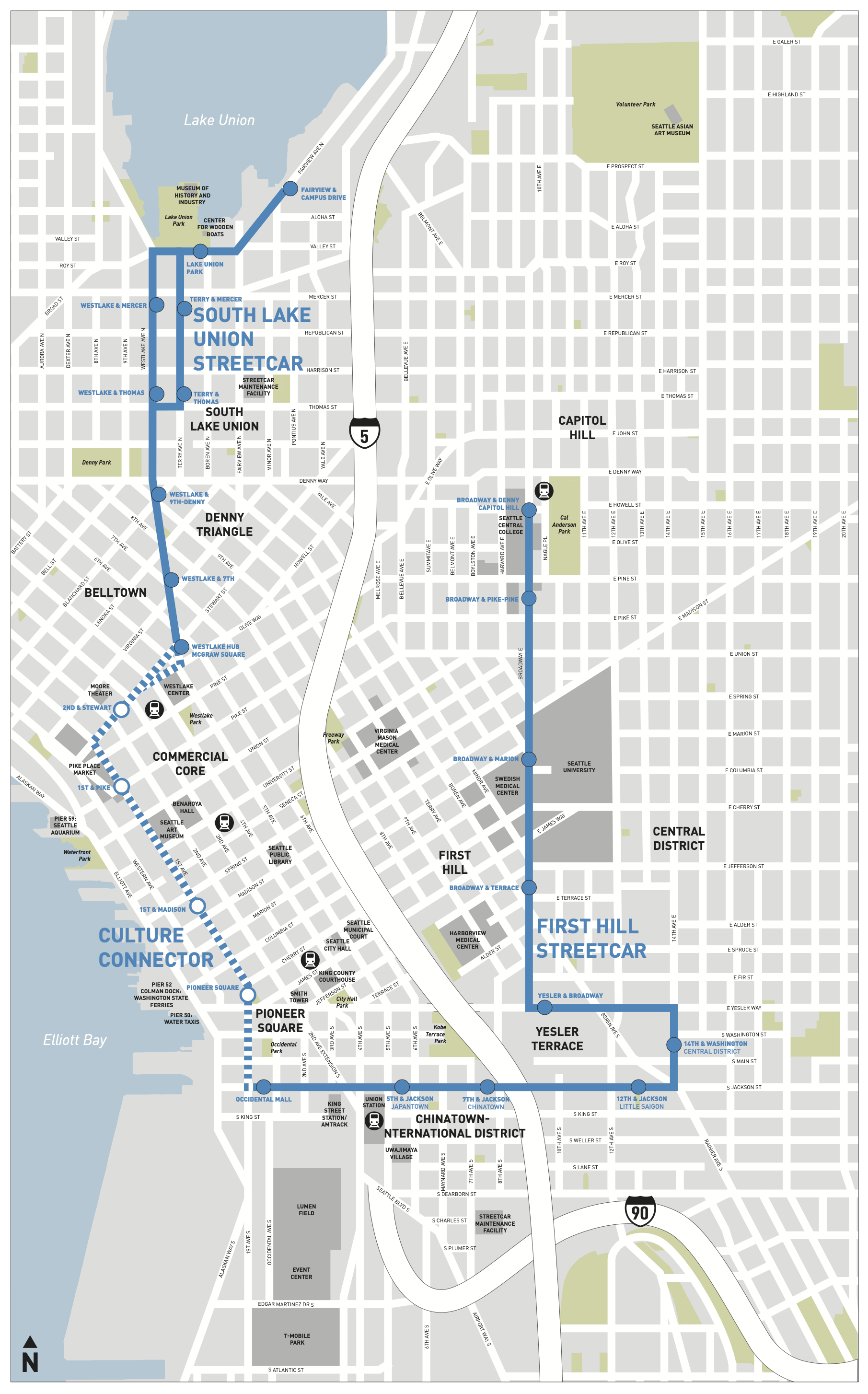by Jeff Smith
https://www.seattle.gov/transportation/ ... -connector
Seattle Streetcar/Culture Connector
What's Happening Now?
In late 2023, we completed the Culture Connector Delivery Assessment. The goal of the assessment was to confirm and update assumptions from the 2018 design, address changing conditions and requirements, and map out a new timeline and cost estimate for the project. A ridership analysis [link to ridership memo] was also conducted to provide an updated travel forecast for the Seattle Streetcar network with the inclusion of the Culture Connector line.
Culture Connector
The Culture Connector streetcar is uniquely poised to be a catalyst for economic vitality in Downtown. This project was formerly called the Center City Connector. The name-change reflects how this new line could connect people from Downtown to Seattle’s cultural offerings in surrounding neighborhoods. Destinations like restaurants, bars, museums, entertainment venues, retail spaces, services, and diverse places to live would be even more accessible. And it would empower locals and visitors to explore our city without a car.
...
...
Next stop, Willoughby
~el Jefe :: RAILROAD.NET Site Administrator/Co-Owner; Carman at Naugatuck Railroad
YouTube Instagram Facebook
~el Jefe :: RAILROAD.NET Site Administrator/Co-Owner; Carman at Naugatuck Railroad
YouTube Instagram Facebook

